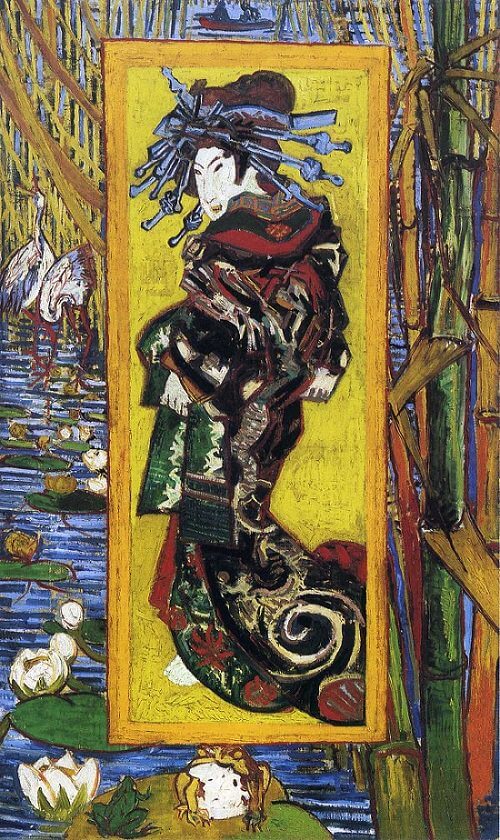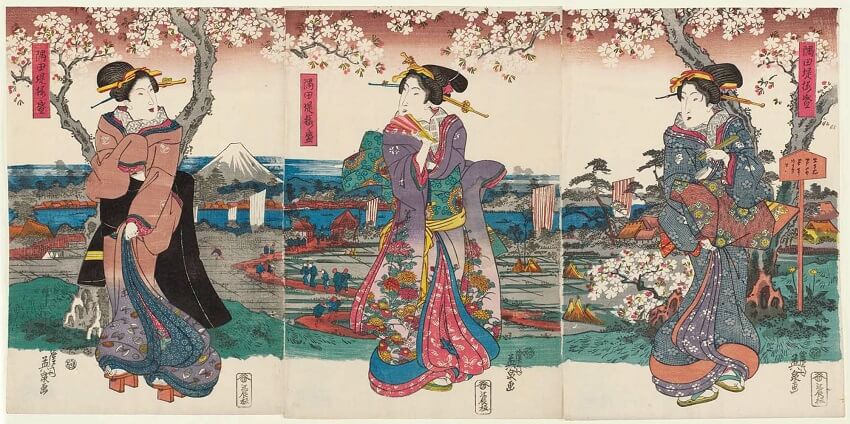Japonaiserie Oiran, 1884 by Vincent Van Gogh

Van Gogh had already developed an interest in Japanese prints in Antwerp, where he had first become acquainted with them. Initially, it had been the expressivity of the images that had particularly appealed to him, but now, in Paris, he also came to perceive a clear connection between these prints and the stylistic innovations of the Impressionism artists, which he was striving to incorporate into his own work at the time.
Van Gogh, an avid collector of Japanese art woodcut prints, had been inspired by Japanese woodcut masters, such as Katsushika Hokusai and Keisai Eisen. Endeavoring to master the formal characteristics of these Japanese prints, Van Gogh made use of the traditional academic method of copying. The painting shown here, after a work by Kesai Eisen, was done from a reproduction rather than from the original, and was the largest and most ambitious of the three copies Van Gogh made of Japanese prints.
Keisai Eisen's courtesan had graced the cover of the special double-issue of Paris Illustre on japonaiserie that appeared in May 1886. Van Gogh traced the figure and drew a grid on the tracing-paper, thereby making it an easy matter to double the size of the image when he transferred it to canvas. He also surrounded the picture with a border filled with animal and plant motifs derived from other Japanese prints. In Japonaiserie Oiran, Van Gogh's choice of animals was certainly not accidental: in 19th century France, prostitutes were often referred to as grues (cranes) or grenouilles (frogs).

Whereas the other copies had only been enlivened with borders sporting imaginary Japanese characters, here we see a scene with depth and cohesiveness: there is a landscape of bamboo stems and water-lilies, with a frog in the foreground and cranes further back, while a small boat with two fishermen is pushed right up against the upper edge.In a sense this method is diametrically opposed to that of the Portrait of Pere Tanguy, in which the figure is given body, against a flat background; in this case it is the background that possesses depth, whereas the woman makes a two-dimensional impression.




















